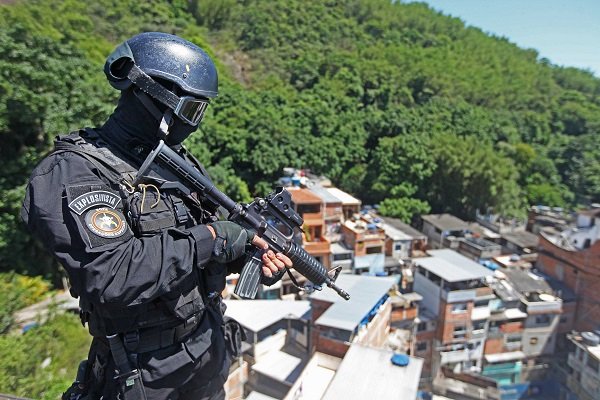In a city where state security statistics revealed an average of 179 robberies per day in 2023, the feeling of vulnerability is nearly constant. At every corner, residents face the risk of falling victim to crime. However, certain neighborhoods stand out with elevated risks, posing greater challenges to public security forces. This pattern is illustrated by the Crime Map, a tool that tracks neighborhood-level data on cell phone thefts, vehicle robberies, pedestrian robberies, and bus-related crimes, the most common offenses affecting daily life in Rio. In 2024, 32 neighborhoods (representing 21% of those analyzed) experienced an increase across all four crime indicators.
This Content Is Only For Subscribers
To unlock this content, subscribe to INTERLIRA Reports.
Critical Locations
Among the 32 neighborhoods with increases in all indicators, eight are clustered within a 5-kilometer radius stretching from Glória in the South Zone to Riachuelo in the North Zone. These neighborhoods are Glória, Centro, Estácio, Cidade Nova, Praça da Bandeira, São Cristóvão, Maracanã, and Riachuelo. In Estácio, cell phone, vehicle, and bus robberies more than doubled in 2024. Maracanã saw a threefold increase in attacks on both drivers and buses: vehicle thefts rose from 61 to 199 (a 226% surge), and bus robberies climbed from 35 to 122 (a 248% jump). In Praça da Bandeira, cell phone thefts rose by 121.7%, reaching 153 cases. In São Cristóvão, vehicle robberies nearly tripled, increasing from 113 to 297.
Center
The Centro neighborhood recorded 1,622 cell phone robberies in 2024—a 55.5% increase from the previous year. This figure is the highest in the city and the largest ever recorded in the downtown area since GLOBO’s tracking tool launched in 2020. Centro also led in pedestrian robberies with 1,938 cases, reflecting a 1.9% rise from 2023. Vehicle thefts more than doubled, from 47 in 2023 to 123 in 2024—another historical high for the area. Crimes committed on public transportation also grew significantly, with 233 incidents reported, marking a 41.2% increase.
Cell Phone Theft Hotspots
Ten neighborhoods accounted for one-third of all 14,196 cell phone thefts registered in the city in 2024, a total of 5,067 incidents. Tijuca ranked second behind Centro with 581 thefts. Other prominent areas on criminals’ routes include Maracanã (455 cases), Barra da Tijuca (424), and Botafogo (423)—all middle- to upper-middle-class neighborhoods. Additional hotspots include Realengo (371), Bangu (350), Madureira (294), Campo Grande (288), and Pavuna (259), which serve as commercial and residential hubs in the North and West Zones. Unlike other crimes, cell phone thefts tend to be concentrated in a smaller number of neighborhoods.
South Zone
In 2024, Copacabana experienced a notable 43.2% decrease in pedestrian robberies, dropping to 328 incidents from 577 the previous year. In contrast, neighboring Botafogo saw a rise in this category, according to the Crime Map. The Military Police believe these opposite trends are linked and attribute them to shifts in policing strategies across the South Zone. This shift in crime has also affected Glória, where pedestrian robberies jumped by 62.9% (259 cases), and Santa Teresa, a hillside neighborhood bordering the central region, which recorded a 77.4% increase (204 cases).
Analysis:
The 2024 crime data reveal a worrying pattern of territorial concentration and criminal adaptation in Rio de Janeiro. While the overall sense of insecurity remains high across the city, certain neighborhoods—especially those within a short radius between the South and North Zones—are experiencing sharp and simultaneous increases in multiple types of urban crime. This cluster effect suggests that public security interventions have been either insufficient or poorly coordinated in key transit and commercial corridors.
Meanwhile, the contrasting trends between Copacabana and Botafogo exemplify how shifts in policing strategies can displace rather than reduce crime, requiring a more integrated, zone-wide approach.
Sources: O Globo [1], [2], [3], [4], [5], [6], [7], [8], [9].




